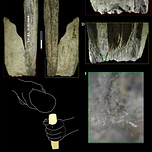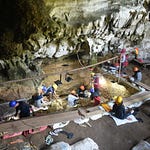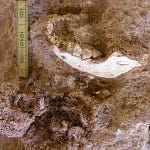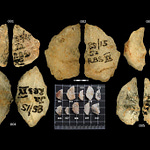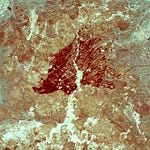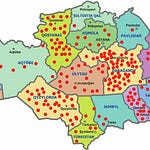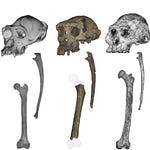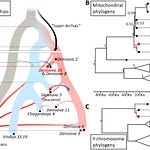By the entrance of Scladina Cave in southern Belgium, archaeologists have recovered a set of unusual artifacts: bone tools made not from common prey species like deer or bear, but from Panthera spelaea, the extinct cave lion. The find, reported by Grégory Abrams and colleagues in Scientific Reports1, offers the earliest evidence of Neanderthals transforming the remains of large carnivores into functional, multipurpose tools. And they did so with remarkable intention and technical skill.

The cave lion tibia used in the manufacture of these tools dates to roughly 130,000 years ago, during the waning phase of the Saalian glaciation. That places the find firmly within the Middle Pleistocene, a time when Neanderthals roamed a Europe marked by shifting climates and a high density of megafauna.
"The intentional transformation of lion bones into functional tools highlights Neanderthals' cognitive skills, adaptability, and capacity for resource utilization beyond their immediate survival needs," wrote the study's authors.
A lion's leg, turned tool
Excavations at Scladina Cave have long painted a vivid picture of Neanderthal life. The site is best known for the remains of a juvenile Neanderthal, the "Scladina child," but it also contains a layered record of lithic industries, faunal remains, and now, a suite of bone tools shaped from a cave lion tibia.
Four bone retouchers were identified as having been crafted from the same tibia. Two of these fragments refit into a larger shaft, suggesting they were part of a multifunctional implement. Polish marks and retouched edges on the basal end of the bone indicate it was first used as a kind of chisel or intermediate tool. Later, the same bone was fractured deliberately, with each segment then repurposed for fine retouching of flint tools. This sequencing of manufacture, use, breakage, and reuse shows a degree of planning that challenges older narratives about Neanderthal technological simplicity.

Selecting the right predator
Cave lions were not typical Neanderthal quarry. The rarity of carnivore bones showing human modification has made it difficult to assess the nature of their relationship. At Scladina, the presence of cut marks and the freshness of the bone fragments suggest Neanderthals had access to a relatively fresh carcass—whether through hunting, opportunistic scavenging, or confrontation is unclear. But the fact that the tibia was brought into the cave, processed, and deliberately fashioned into tools, leans heavily toward intentional exploitation.
Despite the diversity of fauna at the site—including cave bear, red fox, wolf, reindeer, and woolly rhinoceros—Neanderthals selected long limb bones, especially tibias and femurs, for their tools. Notably, the dimensions of the retouchers remained consistent across species, suggesting that Neanderthals prioritized form and functionality over symbolic associations with particular animals.
Not just bone, but a design
What distinguishes these tools is not just their raw material, but how they were made and used. The shaping of the tibia into a beveled edge, the presence of polish likely caused by use on bone or wood, and the subsequent breakage and reuse of fragments point to a sophisticated operational sequence.
"The morphometric consistency across taxa indicates a standardized approach to tool production," the authors note, emphasizing that Neanderthals were not simply repurposing waste but carefully selecting and engineering bone tools for specific tasks.
Analytical techniques, including ZooMS (Zooarchaeology by Mass Spectrometry) and LC-MS/MS proteomics, confirmed the bones' identity as Panthera spelaea. These molecular methods helped clarify earlier misidentifications and now anchor the tools firmly in Neanderthal behavioral repertoires.
The lion and the toolkit
The presence of these cave lion tools expands what is known about Neanderthal resource use. Rather than confining themselves to herbivore prey and their bones, they also utilized large carnivore remains when it suited their technological needs. This adds nuance to debates about Neanderthal cognitive capacities, hinting at a flexible, strategic engagement with their environment and the species within it.
While symbolic interpretations are tempting—especially given Upper Paleolithic examples like the Löwenmensch figurine from Germany—no evidence at Scladina suggests ritual or spiritual use. These tools were, above all, practical. Still, the act of converting a lion's leg into a tool carries an undeniable charge. Neanderthals did not just coexist with apex predators. Sometimes, they made them part of the toolkit.
Further Reading
Blasco, R., et al. (2010). The capture of a lion (Panthera leo fossilis) at the Gran Dolina site. Journal of Archaeological Science, 37(9), 2051–2060. https://doi.org/10.1016/j.jas.2010.03.020
Van Kolfschoten, T., et al. (2015). Lower Paleolithic bone tools from the 'Spear Horizon' at Schöningen. Journal of Human Evolution, 89, 226–236. https://doi.org/10.1016/j.jhevol.2015.09.012
Russo, G., et al. (2023). First direct evidence of lion hunting and early use of a lion pelt by Neanderthals. Scientific Reports, 13, 16405. https://doi.org/10.1038/s41598-023-42764-0
Abrams, G., Auguste, P., Pirson, S., De Groote, I., Halbrucker, É., Di Modica, K., Pironneau, C., Dedrie, T., Meloro, C., Fischer, V., Bocherens, H., Vanbrabant, Y., & Bray, F. (2025). Earliest evidence of Neanderthal multifunctional bone tool production from cave lion (Panthera spelaea) remains. Scientific Reports, 15(1), 24010. https://doi.org/10.1038/s41598-025-08588-w

